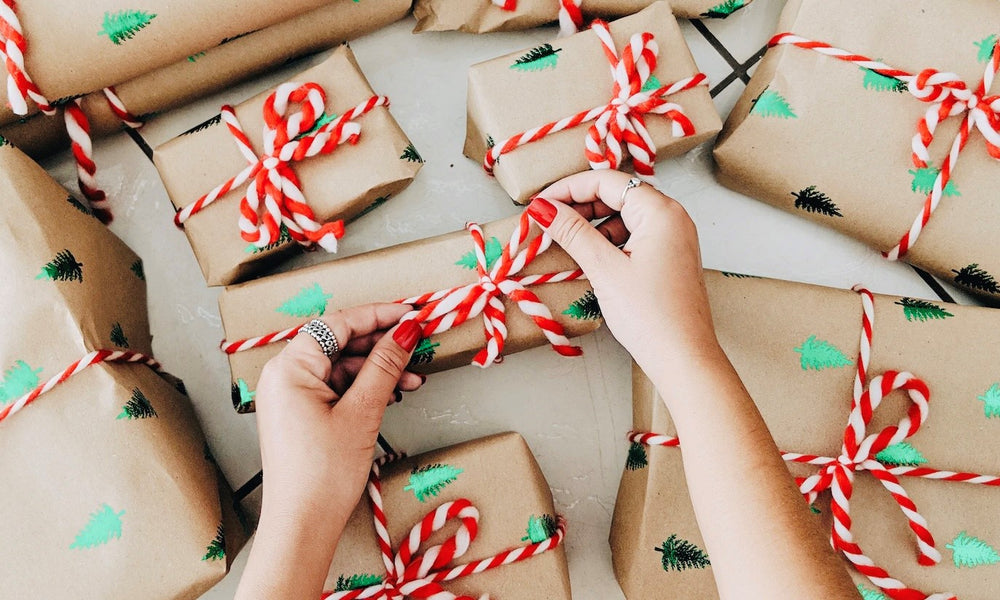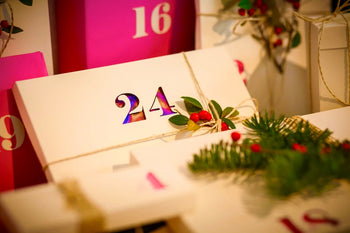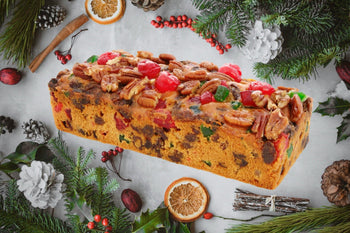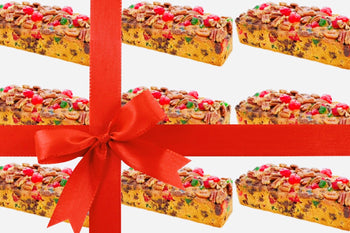As festive as the lights on the tree and as timeless as the carols that echo through our homes, the act of gift-giving is woven into the very fabric of the season. Yet, amid the warm glow of Yuletide festivities, there's a whimsical tradition that demands our attention: the meticulous art of wrapping Christmas presents.
Have you ever found yourself marveling at the kaleidoscope of colors beneath the tree, each present a promise waiting to be unveiled? What magic lies within those layers of paper, and how did the simple act of giving become an elaborate dance of anticipation and surprise?
Join us on a merry exploration of the origins of Christmas presents, the evolution of wrapping, and the fascinating history behind that festive wrapping paper. After all, there's more to those wrapped gifts under the tree than meets the eye—they hold not just tangible treasures but the spirit of generosity, surprise, and the timeless joy of Christmas.
The Gift of Giving: A Historical Prelude
To understand why we wrap presents, let's delve into the history of gift-giving itself. The custom of exchanging gifts during the holiday season has ancient roots, dating back to various cultures and traditions. The Romans celebrated Saturnalia, a festival marked by gift exchanges and revelry. In the Middle Ages, English communities practiced "boxing," where alms were collected in boxes and distributed to the less fortunate on St. Stephen's Day.
Fast forward to the Victorian era, and you find the Christmas we recognize today taking shape. Queen Victoria and Prince Albert popularized the Christmas tree in the 19th century, and with it, the notion of placing wrapped gifts beneath its boughs. The act of giving became more intentional, and the anticipation of unwrapping heightened the festive spirit.
The Wrapping Evolution
In the early days of Christmas gift-giving, practicality prevailed over presentation. Gifts were often handed over in simple cloth sacks or wooden boxes, lacking the decorative flair we associate with modern wrapping. The shift towards elaborate wrappings began in the 20th century, coinciding with the rise of consumer culture and the commercialization of Christmas.
Department stores played a significant role in popularizing the concept of beautifully wrapped gifts. They transformed the act of gift-giving into a spectacle, showcasing dazzling displays of meticulously wrapped packages. The idea was simple but effective: the more appealing the wrapping, the more magical the gift.
The Art of Surprise: Why We Love Wrapping
So, why do we wrap presents in the first place? The answer lies in the joy of surprise. Wrapping adds an element of mystery and excitement to the gift-giving experience. Think of it as the prologue to the main event—a tantalizing teaser that builds anticipation.
The element of surprise taps into our innate sense of curiosity and wonder. The act of unwrapping transforms a mundane moment into a thrilling revelation. As the paper falls away, the recipient is not just receiving an object; they are unwrapping a moment of delight, a gesture of thoughtfulness carefully concealed within layers of anticipation.
The Psychology of Wrapping
Psychologists have explored the impact of wrapping on the giver and the receiver alike. From the giver's perspective, wrapping a gift is an expression of care and effort. It turns a simple transaction into a tangible symbol of thoughtfulness. The time and creativity invested in the wrapping process convey a deeper emotional connection, enhancing the gift's sentimental value.
On the flip side, the recipient experiences a rush of positive emotions when presented with a beautifully wrapped gift. The sheer act of unwrapping triggers the brain's pleasure centers, releasing dopamine and fostering a sense of happiness. It's a sensory experience that goes beyond the gift itself, creating lasting memories associated with the act of receiving.
The Origins of Wrapping Paper
Now, let's unwrap the history of wrapping paper itself. The tradition of wrapping gifts with paper has its roots in ancient China. The Chinese are credited with inventing paper around 2,000 years ago, and by the 2nd century AD, they were using it to wrap and decorate gifts. This practice gradually spread to other cultures, including the Japanese, who developed the art of furoshiki—a traditional method of wrapping items in cloth.
In the Western world, the use of wrapping paper gained momentum in the early 20th century. Before that, people relied on newspapers, tissue paper, or plain brown paper to wrap their gifts. It was only when decorative paper became more widely available that wrapping evolved into an art form.
Hallmark and the Commercialization of Wrapping
The mid-20th century saw a significant leap in the commercialization of wrapping paper, thanks in part to companies like Hallmark. In the 1910s, the Hall brothers began producing decorative envelope linings that could double as wrapping paper. This innovation marked the beginning of the mass production of festive wrapping materials.
Hallmark continued to play a pivotal role in shaping the aesthetics of Christmas wrapping. The company introduced coordinated wrapping paper sets, complete with matching ribbons and gift tags, encouraging consumers to create harmonious, picture-perfect presents. The idea of a beautifully coordinated gift ensemble became a staple of holiday traditions.
Environmental Concerns and Sustainable Wrapping
As we joyfully unwrap our presents each year, it's essential to acknowledge the environmental impact of traditional wrapping practices. The sheer volume of discarded wrapping paper during the holiday season raises concerns about waste and sustainability.
In recent years, there has been a growing movement towards eco-friendly wrapping alternatives. People are exploring creative solutions, such as using reusable fabric wraps, repurposing newspapers, or opting for recyclable wrapping paper. The focus is shifting towards enjoying the tradition of wrapping while minimizing its ecological footprint.
Time To Wrap Things Up!
So, why do we wrap Christmas presents? It's a delightful combination of history, tradition, and the innate human desire for surprise and celebration. From the humble beginnings of cloth sacks to the elaborate wrapping paper designs we enjoy today, the act of wrapping has transformed into an integral part of the holiday experience.
As we exchange gifts wrapped in festive paper, let's appreciate the artistry behind the presentation and the joy it brings to both givers and receivers. And perhaps, in the spirit of the season, we can embrace sustainable wrapping practices, ensuring that our celebrations leave a positive mark on both our hearts and the planet. After all, the true magic of Christmas lies not just in the presents we give and receive but in the love and connection we share with those around us.
Want to experience holidays without the hassle?
Rent-A-Christmas Pre-Decorated Greenery can help!






